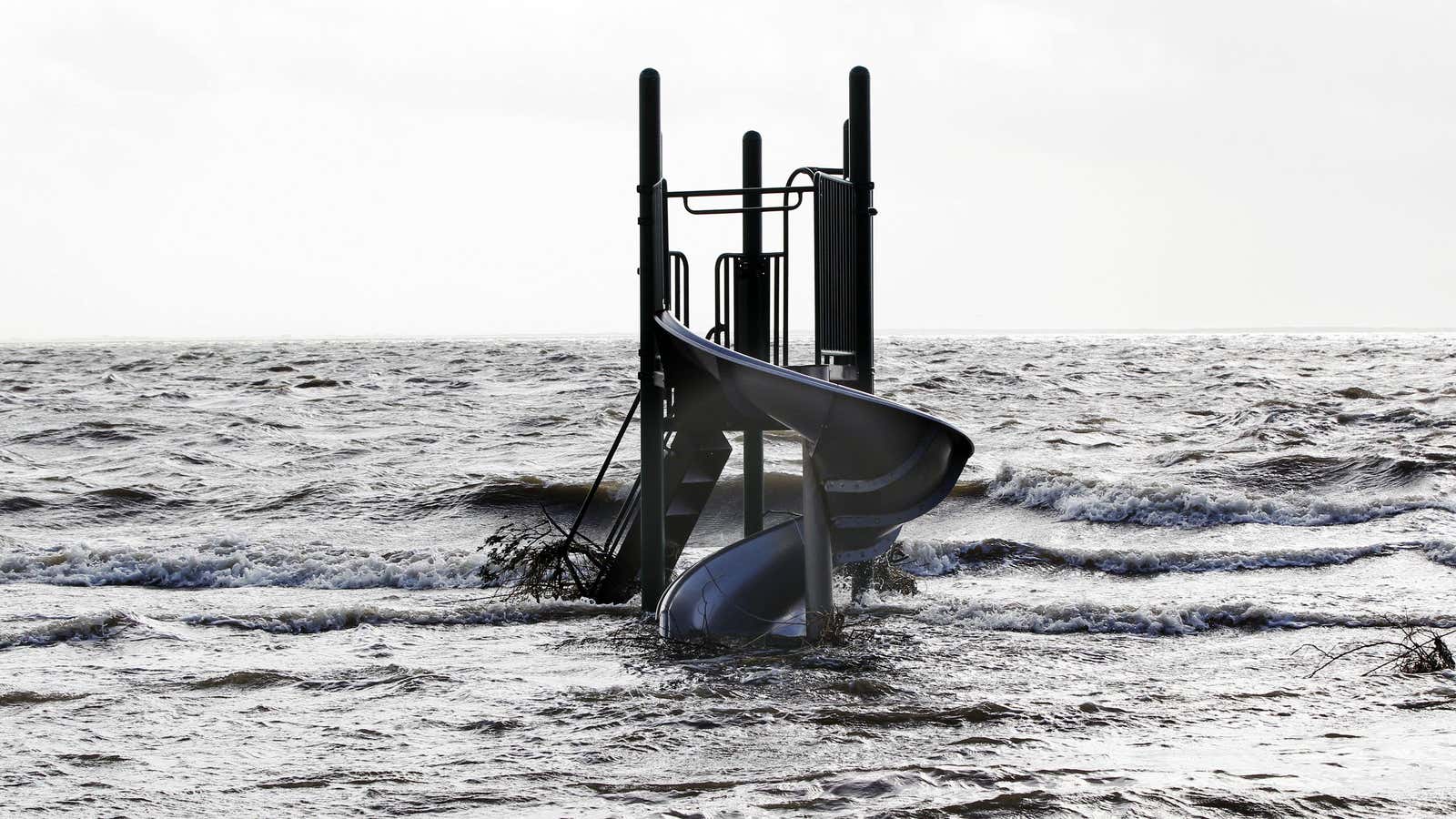Last year was the third-hottest year on record in the US. It was also the year in which weather disasters cost the country the most in history. There were 16 different major weather disasters, exacting $306 billion in damages to the US, $100 billion more than any previous year (adjusted to today’s dollars), reports The National Oceanographic and Atmospheric Administration (NOAA).
There have been 219 severe events (those costing more than $1 billion in damages) since 1980, accounting for some $1.5 trillion in total costs. Buried in that number is the real story: the frequency of severe events has nearly tripled over that period. Through the 1980s and 90s, there were 3.75 severe events per year on average. Over the last five years, that figure rose to 11.6 events annually.
2017 was the worst on record, and it may be a preview of life under a hotter atmosphere. More energy stored as heat in the oceans and air fuels storms and shifts climate patterns. We’re likely seeing its effects. In 2017, the US endured an uptick in intense hurricanes followed by regional droughts, fires, and storms. While it’s difficult to link climate change to specific weather events, a meta-analysis (pdf) of 131 papers concluded that 65% of extreme events in 2016 were intensified by human-caused climate change. It also found that three extreme events—the 2016 record global heat, the heat across Asia, and a marine heat wave off the coast of Alaska—would have been impossible in a preindustrial climate.
To reach the astronomical $306 billion toll for 2017, NOAA tallied the “total, direct costs” of damage caused by severe events to buildings, property, business interruptions, vehicles, public infrastructure, and agricultural assets. It’s likely a conservative estimate as it excludes harm to natural resources and human health, as well as the statistical values for loss of life.
* The actual death toll for Hurricane Maria may be far higher than current estimates.
The satellite data-analysis company Descartes Labs assessed the damage from California’s wildfires and Houston’s flooding from Hurricane Harvey using real-time satellite imagery, high-resolution sensors, and machine-learning algorithms. The results offer a visual sense of the scale of destruction of two of the biggest disasters in 2017.
California’s Thomas Fires
In 2017, wildfires in central and southern California represented the most costly wildfire disaster ever recorded for the state, and the most deadly since the 1930s. At least 44 people were killed, and more than 16,000 homes, businesses, and other buildings were destroyed.
The largest single fire was the Thomas Fire, a billion-dollar disaster that burned some 285,000 acres north of Los Angeles. Descartes Labs analyzed images showing the progression of the fire from Dec. 4 to Jan. 8, when it was contained. In the image below, the final extent of the fire, as defined by the US Geological Survey, is represented as a red line. Within the region marked by the red outline, areas in black are unburned, purple are lightly burned, and yellow are severely burned with little to no vegetation cover.
Texas flooding from Hurricane Harvey
Hurricane Harvey dumped 60 inches of rain on Houston, an unprecedented amount in one of America’s largest cities. Historic flooding caused $125 billion in damages, a price tag exceeded among all hurricanes in US history only by Hurricane Katrina, which did $160 billion in damage. Over 30,000 people were displaced in Houston and nearby communities because of Harvey, and 200,000 homes and businesses were damaged or destroyed. Descartes Labs analyzed radar data from the European Sentinel-1 satellite to show the spread of flooding during the storm in late August. In the images below, blue represents water along the coast and in inland areas.
One reason for the high cost of weather-related damages is the growth of cities in vulnerable areas. But climate models predict bigger, more frequent disasters. Scientists warn the atmosphere now has more carbon dioxide than any time in the last 3 million years (and 45% more than in the era prior to the Industrial Revolution). The rate of carbon-emissions growth has slowed in recent years, but it may be too little too late to avert catastrophic climate change.
